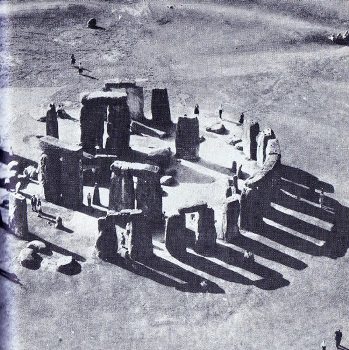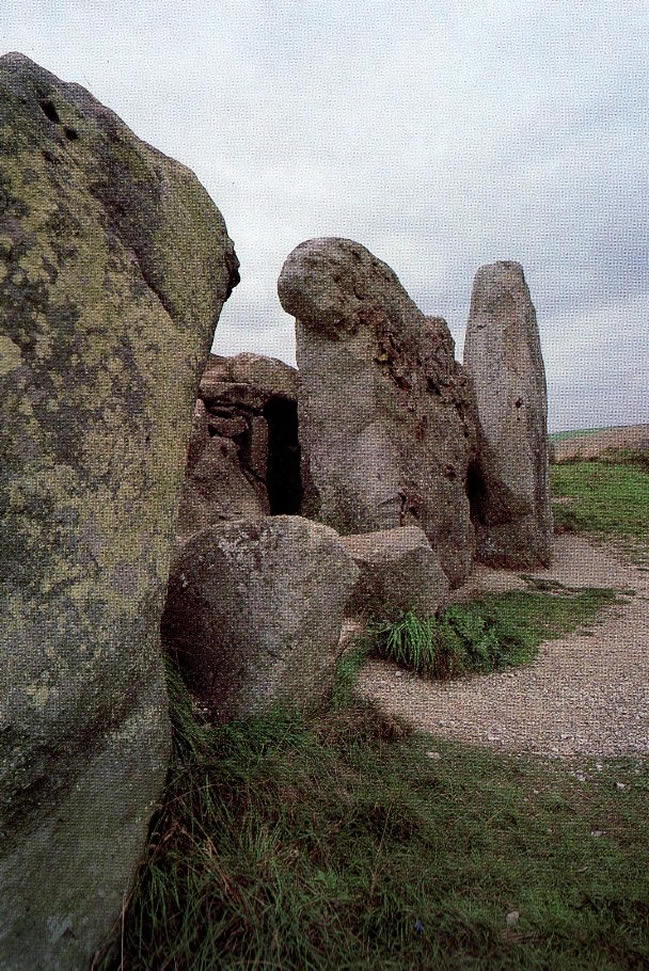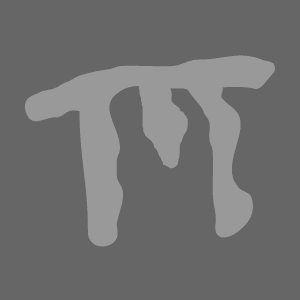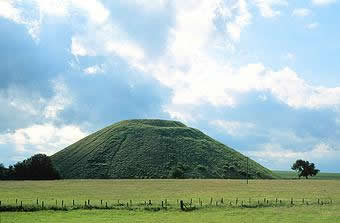|
|
Megalithic burials of Neolithic Age
The archaeological diggings and the by now many decennial studies of hundred of prehistoric burials have demonstrated, with greater confidence of results, that their makers knew with precision the motion of the stars and towards
them they
have oriented their burial constructions.
The bearing of this buildings towards particular events, as the rising or the setting of the most luminous stars, astonishes us more then their giantism. Last of a long series of studiouses, British John North, in the book
“Stonehenge”, 1996, has recognized many series of astral alignments of neolithic megalithic burials; we have elaborated the following data of such locations:
|
Name |
Country |
Tipology |
Age |
Dating (B.C.) |
Astral Target |
|
Fussel's Lodge |
England |
Long Barrow |
Neolithic |
4250/3950 |
Aldebaran, Spica, Beta Crucis, Beta Centauri,
Deneb, Rigel |
|
Wayland's Smithy |
England |
Long Barrow |
Neolithic |
3800/3440 |
Capella, Spica |
|
Wayland's Smithy II |
England |
Long Barrow |
Neolithic |
3800/3440 |
Capella, Spica, Alpha and Beta Crucis
|
|
Horslip (Windmill Hill) |
England |
Long Barrow |
Neolithic |
4160/3840 |
Betelgeuse, Sirius, Venus |
|
West Kenneth |
England |
Long Barrow |
Neolithic |
3800/3400 |
Spica, Pleiades, Betelgeuse, Beta Tauri,
Antares |
|
West Kenneth/ditches |
England |
Long Barrow |
Neolithic |
3790/3360 |
Sirius, Vega |
|
Silbury Hill |
England |
Long Barrow |
Neolithic |
3630/2500 |
? |
|
Beckhampton Road |
England |
Long Barrow |
Neolithic |
3480/3320 |
Rigel, Pollux, Beta Centauri |
|
South Street |
England |
Long Barrow |
Neolithic |
3700/3375 |
Sirius?, Vega? |
|
Skendleby Giant's Hills 1 |
England |
Long Barrow |
Neolithic |
3350/2700 |
Vega, Aldebaran, Betelgeuse |
|
Skendleby Giant's
Hills 2 |
England |
Long Barrow |
Neolithic |
3940/3540 |
Deneb, Aldebaran, Betelgeuse, solstice sunrise/sunset
? |
|
Radley |
England |
Burial Parallelogram |
Neolithic |
3730/3670 |
Deneb, Bellatrix |
|
Grendon |
England |
Dice mound |
Neolithic |
3630/3350 |
Deneb, Betelgeuse, solstice sunrise/sunset |
|
Hazleton North |
England |
Cairn |
Neolithic |
3870 ? |
Vega, Sirius |
|
Windmill Hill (inner ring)
|
England
|
Circular mound |
|
Ditch az. 156° |
Neolithic |
3945/3515 |
Sirius |
|
Ditch az. 346,5° |
Neolithic |
3945/3515 |
Vega |
|
Windmill Hill (middle ring)
|
England
|
Circular mound |
|
Ditch az.23° |
Neolithic |
3520 |
Vega |
|
Ditch az.107° |
Neolithic |
3420 |
Antares |
|
Ditch az.130° |
Neolithic |
3480 |
Bellatrix |
|
Ditch az.275° |
Neolithic |
3600 |
Altair (sunset) |
|
Windmill Hill (outer ring)
|
England
|
Circular mound |
|
Ditch az. 90° |
Neolithic |
3450 |
Spica |
|
Ditch az.122° |
Neolithic |
3520 |
Antares |
|
Ditch az.138° |
Neolithic |
3520 |
Aldebaran |
|
Ditch az.157° |
Neolithic |
3510 |
Bellatrix |
|
Ditch az.276° |
Neolithic |
3480 |
Pollux (sunset) |
Source:
John North 1996
(Processing by F.B.)
|
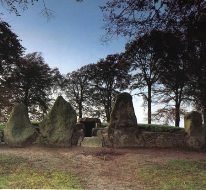
Weyland Smithy
(Source:
Event Horizons,
David
Lyons, Ambleside, Cumbria)
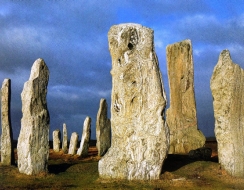
Callanish
(Source:
Event Horizon,
David Lyons, Ambleside; Cumbria, G.)
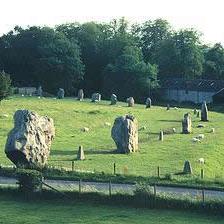
Avebury
(Source:
Diego Meozzi)
|
|
Reference to the "Heliacal
Star"
Astronomical alignments were incorporated
inside Neolithic and Bronze Age buildings; this factor pleads in favor of the argument that the sky was gilding a leading role in prehistoric religions. This circumstance is
a realy indicator of a religious belief in the divinity of the heavenly bodies,
and
the stars may have
probably
been considered, at least in the remote past, a representation of
the ancestors become gods after their dead. Very rarely in prehistory, the Neolithic burials are fully aligned to a solar phase, as can be seen in the table. There is, in fact, a constant deviation to the right, ie
to the north-east.
The approach seems to correspond to the
sunrise star (in some cases
the sunset star) visible in the region of the horizon where the sun
was rising (or setting). The star of reference, therefore, seems to
be what astronomers call "Heliacal
Star".
Classic Anglo-saxon
Megalithism
In Pottery Neolithic, it appear another kind of
buildings that seem have hosted,
inside
them ,
some
religious
ceremonies
oriented towards the astral motions, particularely towards
the lunar or solar phases. Their typology has been codified with the following denominations:
Cursus:
space between one brace of parallel banks, with ditches annexed inside or outside;
Row:
great dimension stones (menhir) aligned in one direction;
Avenue:
space between parallel stone rows.
In
Pottery Neolithic, the burial of the members of a clan was
probably geared towards the star or constellation that was thought
as totemic or protector of the clan, for a possible rebirth. (Even today
there is the saying "born under a lucky star").
Marcel Moreau, in
Les civilizations des Etoiles has an interesting explanation
of this phenomenon: "The prehistoric men hooked up some stellar
groups with imaginary lines, drawing in the sky some approximate
figures of men and animals, easily recognizable. For orientation, it
was only necessary the indication of the brighter star of a constellation.
So they said: The Eye of Taurus,
Virgo's Spica, Vega of Lyra etc. (Moreau, 1973, 27)". All these groups of stars, ideally linked together, in fact, are indicated (probably in
the same way of the prehistoric times) with the name of an animal (ex: Bear, Taurus, Aries, etc.),
or some human figures or, in some cases, with some zoomorphized figures (Sagittarius, Capricorn, etc..).
This could have led to the identification of
a clan, a tribe, or even of their ancestors, with their hero or animal identified in the heavenly constellation of reference. The religious ceremonies celebrated on regular basis,
inside this megalithic buildings, should therefore be similar to many rituals that still
are existing among primitive peoples.
"That 's what - continues Moreau - it's called
getting into the skin of another, or under a protective mask,
to be more powerful. It's the origin of all the mythic skins and totemic masks.
It's the introduction of a human being in the skin of a celestial animal,
then a totem animal".
|
Here is the table specifying the astronomical alignments:
|
Name |
Country |
Tipology |
Age |
Dating (B.C.) |
Astral target |
|
Dorset |
England |
Cursus |
Neolithic |
3880/3070 |
Rigel, Pollux, Rigel Centauri, Sirius |
|
Stonehenge (Lesser
Cursus) |
England |
Cursus |
Neolithic |
3430 |
Altair, Spica, Antares |
|
Stonehenge (Greath
Cursus) |
England |
Cursus |
Neolithic |
3420/3240 |
Antares, Pollux, Arcturus, Rigel |
|
Dorcester |
England |
Cursus |
Copper Age |
2450 |
Pollux |
|
Brandyshop Bridge |
Wales |
Cursus |
Copper Age |
2700 |
Rigel |
|
Bledlow Cross |
England |
Giant representation |
Neolithic |
3660/3620 |
Rigel, Sirius |
|
Whiteleaf Cross |
England |
Giant representation |
Neolithic |
3650/3620 |
Spica, Capella |
|
Wilmington Long
Man |
England |
Giant representation |
Neolithic |
3480 |
Orion |
|
Uffington White
Horse |
England |
Giant representation |
Neolithic |
3230 |
Taurus |
|
Dartmoor
(Corringdon Ball) |
England |
Row |
Copper Age |
2720/1980 |
Rigel |
|
West Kenneth
Avenue |
England |
Avenue, with some Menhirs |
Copper Age |
2235 |
Rigel, minor southern lunar sunrise and sunset,
minor northern lunar sunrise and sunset,
major southern lunar
sunset |
|
Stonehenge Avenue |
England |
Avenue |
Copper Age |
2165 |
Minor northern lunar sunset |
|
Stall Moor/Green Hill |
England |
Row |
Copper/Br. Age |
2010/1660 |
Deneb, Arcturus |
|
Butterdon Row |
England |
Row |
Bronze Age |
1720 |
Arcturus |
|
Staldon Row |
England |
Row |
Bronze Age |
1660 |
Arcturus, Vega |
Source:
John North 1996
(Processing by F.B.)
|

Stonehenge
(Source:
Diego Meozzi)
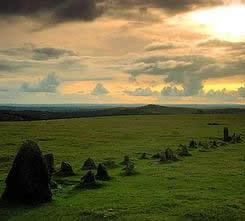
Devon
(Source:
Diego Meozzi) |
|
Astral calendars
With the development of the civilization,
very complex constructions
appear, with
a function of calendars for ceremonial using; only in minimal part
with stellar target, but
lunar and solar for the greater part:
a)
Henge:
circular enclosure with internal or
external ditches and often one or more inner rings of wooden poles
(treehenge) or
rocks;
b)
Cromlech:
breton expression indicating a stone circle surrounding a
mound-shaped peristyle.
Some scholars record, in the course of the 3rd millenium B.C., the introduction in Great Britain of the
bell-beaker by a population coming from the continent. However, every hypothesis of connection between the arrival of new populations and the development of the religious cult of the moon and the sun
has to be taken with extreme caution. The writer, on the contrary, thinks somewhat singular this
hypothetic connection between a particular glass style and the changing of the religious cult by a part of
a population.
Here is a third table concerning more complex constructions, with
a calendar function for ceremonial use and their astronomical orientations.
|
|
Name |
Country |
Tipology |
Age |
Dating (B.C.) |
Astral Target |
|
Arminghall |
England |
Treehenge |
Neolithic |
3100 |
Solstice sunrise and sunset |
|
Stonehenge (Access road poles) |
England |
Treehenge |
Neolithic |
3000 |
Winter
solstice sunset, Rigel |
|
Stonehenge
(Aubrey Holes tangent lines) |
England |
Treehenge |
Neolithic |
2850 |
Winter
solstice sunset, southern lunar solstice sunset |
|
Stonehenge
(station stones rectangle) |
England |
Henge |
Neolithic |
2600 |
Northern lunar solstice sunset |
|
Avebury |
England |
Henge |
Neolithic |
2600 |
Deneb?, northern and souther lunar solstice
sunrise and sunset, summer and winter sunset solstice |
|
Mount Pleasant |
England |
Treehenge |
Copper Age |
2500 |
Vega, Aldebaran, sunrise and sunset solstice |
|
Stonehenge
(Heel Stone-Altar Stone-Trilithon) |
England |
Henge |
Copper Age |
2460 |
Winter solstice sunrise |
|
Durrington Walls |
England |
Treehenge |
Copper Age |
2440/2320 |
Deneb, Vega, Aldebaran, sunrise and sunset
solstice, northern lunar sunset solstice |
|
Woodhenge |
England |
Treehenge |
Copper Age |
2270 |
Sunrise solstice, northern lunar sunset
solstice?
|
|
Harenermolen 1st
Phase |
Nederland |
Treehenge |
Copper Age |
2100/2000 |
? |
|
Harenermolen 2nd
Phase |
Nederland |
Treehenge |
Copper/Br. Age |
2000/1500 |
? |
|
Callanish |
Hebrides |
Henge + Row |
Copper/Br. Age |
1800 |
Capella, Betelgeuse, major southern lunar
sunrice solstice, northern lunar sunset
solstice,
winter sunrise and sunset solstice |
|
Harenermolen 3rd
Phase |
Nederland |
Treehenge |
Bronze Age |
1500/1100 |
major southern lunar sunrice solstice, sunrise
and sunset
solstice |
|
Drizzlecomb |
England |
Henge + Row |
Bronze Age |
1510? |
Pollux, Capella? |
Source: John North 1996
(Processing by F.B.)

|
